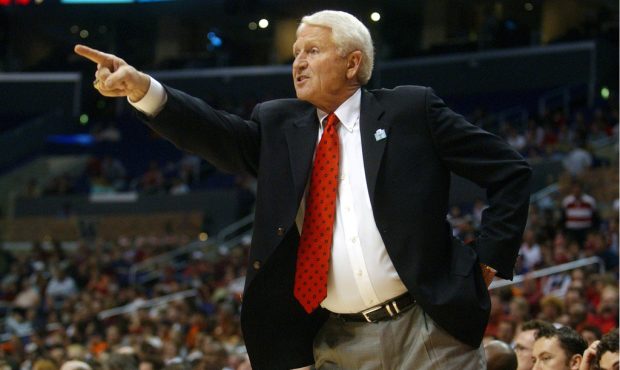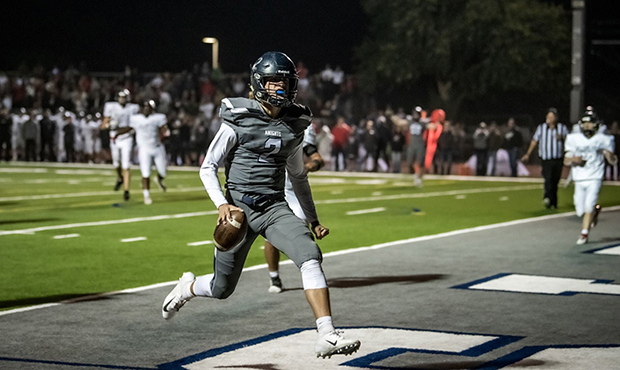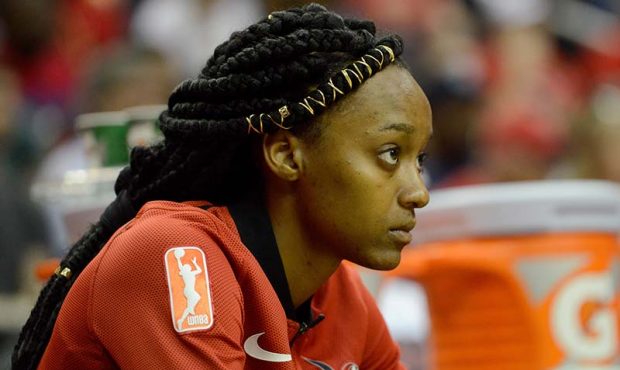Arizona’s 1988 win over UNC laid foundation of CBB powerhouse
Mar 27, 2020, 8:14 PM | Updated: Mar 28, 2020, 11:50 am

Lute Olson was the University of Arizona basketball coach from 1983-2008
With the sports world on hold, Cronkite News will take a daily look at this day in sports history and reflect on some of the biggest moments in Arizona sports.
PHOENIX – The Arizona Wildcats, with four appearances in the NCAA Final Four, two trips to the championship game and an NCAA title in 1997, are regarded as college basketball royalty.
And the kingdom’s foundation was laid, appropriately, at a Kingdome.
On this day in 1988 at the Kingdome in Seattle, the Lute Olson-coached Wildcats of All-America forward Sean Elliott and sharp-shooting guard Steve Kerr dominated North Carolina, 70-52, to reach the Final Four for the first time in Arizona’s storied basketball history.
Olson’s team was ahead of its time, a club that would fit perfectly in today’s analytics-based game. Elliott, a smooth 6-foot-8 junior forward, was the catalyst. His explosive first step allowed him to penetrate opposing defenses, either to get to the rim or to kick the ball out to perimeter shooters led by Kerr, who led the NCAA in three-point shooting percentage.
The Wildcats could run and shoot. Even the team’s 6-foot-7 center, Tom Tolbert, was a threat from behind the arc.
In all, that team included five future NBA players – Elliott, Kerr, forward Anthony Cook, Tolbert and swingman Jud Buechler. And the sixth man was Kenny Lofton, who would go on to become a six-time major league All-Star and one of only two men ever to play in an NCAA Final Four and a World Series (along with pitcher Tim Stoddard).
The team was so loaded with talent that another long-time NBA player, center Sean Rooks, was a redshirt and did not play that season.
Kerr went on to win five NBA championship rings as a player and three more as coach of the Golden State Warriors.
Elliott was a two-time NBA All-Star and helped San Antonio win its first NBA championship in 1999.
“We were definitely a juggernaut but maybe it wasn’t the blueprint you’d see from a Kentucky these days,” Kerr said in an interview with the Arizona Daily Star. “We weren’t all blue-chip, but we were a bunch of guys who turned out to be pretty good.”
Kerr, in fact, was barely recruited out of high school, and was a late addition to Olson’s first recruiting class. He had sat out the previous season after suffering a catastrophic knee injury while playing for the Olson-coached 1986 U.S. gold-medal team at the FIBA World Championships in Spain.
When Olson arrived in Tucson, leaving an Iowa program he had led to a Final Four, he found one of the nation’s top recruits – Elliott – playing in his new backyard at Tucson’s Cholla High School.
They all came together during that magical 1987-88 season.
“The talent on that team was incredible, but there have been other talented teams at Arizona,” Matt Muehlebach, a freshman point guard on that team told the Daily Star. “Our secret sauce was the chemistry.”
The Wildcats went 28-2 in the regular season, winning the Great Alaska Shootout early, where they defeated a powerful Michigan team and top-ranked Syracuse. Their only non-conference loss came against New Mexico at the Lobos’ fabled “Pit,” and Arizona plowed through the Pac-10 conference with just one loss, which came at Stanford.
They followed up their Pac-10 regular-season title by dismantling their opponents in each conference tournament game, winning their three games by an average of 18 points.
Arizona took a 31-2 and a No. 1 seed into the NCAA West Regional, and rolled past Cornell, Iowa and Seton Hall, winning each by at least 20 points.
“When you say ‘super team’, we were not a super team,” guard Harvey Mason told the Daily Star. “We were put together with a master plan, and it was a team that evolved from year to year. We had great energy among the entire team.”
After dispatching Seton Hall, the Wildcats faced their toughest task to that point of the tournament against coach Dean Smith’s No. 2-seeded Tar Heels, who finished first during the regular season in the ACC.
North Carolina’s roster featured six future NBA players, led by burly All-America forward J.R. Reid, and center Scott Williams, who went on to a 15-year NBA career, won three NBA titles in Chicago and now is an analyst for Grand Canyon basketball.
The powerful Tar Heels had just wracked up 123 points in a second-round game against a run-and-gun Loyola Marymount club.
The first half of the regional final saw the team go back and forth with North Carolina emerging with a two-point halftime edge.
But a 44-point Arizona eruption in the second half propelled the Wildcats to a 70-52 victory and the program’s first Final Four. Elliott scored a game-high 24 points, Tolbert added 21, and Kerr made three of his four three-point attempts and finished with 14.
Arizona had previously made just one Elite Eight and two Sweet 16’s in program history, and Olson resurrected a program that had won just four games in 1982-83 before he arrived.
The Wildcats went on to lose to Oklahoma in the semifinals of that 1988 Final Four at Kemper Arena in Kansas City, Missouri. But the Wildcats have become a fixture in the NCAA tournament, making 16 appearances in the Sweet 16, nine trips to the Elite 8 and three more Final Four runs since then, including their championship season of 1997.






